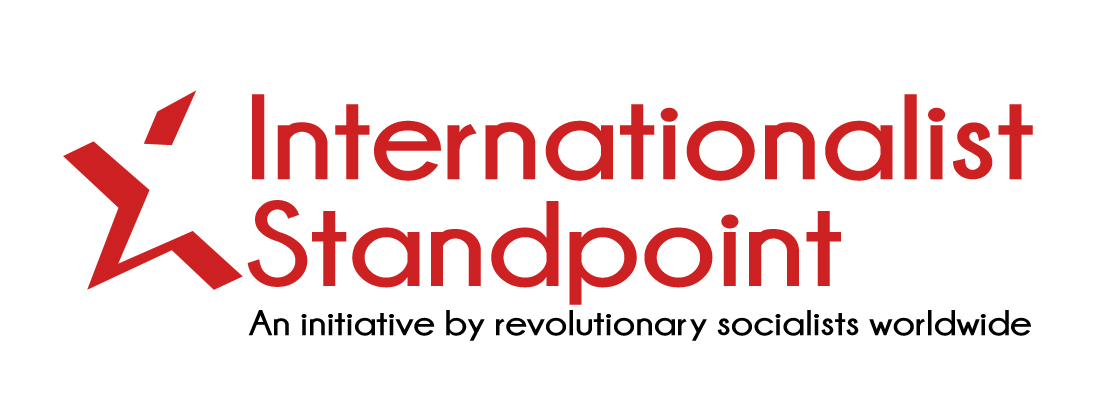The Iranian regime is once again scapegoating the country’s national minorities and Afghan refugees. This is a desperate attempt to shore up its crumbling support through inciting racism and to cover up its intelligence failures during the war with Israel and the US.
Since the war, the Afghan deportation scheme that began in March has been ramped up with the daily expulsions of refugees rising from 5,000 to 30,000 (UNHCR figures). Most expulsions have involved the use of force and violence.
Even though officially this campaign is aimed at “returning unauthorised [Afghan] citizens to their country and giving authorised [Afghan] citizens residence permits”, it has been accompanied by various concocted stories about the role of Afghans in a Mossad espionage network that helped Israel target crucial military assets, senior Pasdaran commanders and nuclear scientists for attacks. Many politicians and functionaries of the regime have therefore applauded the violent expulsion of the Afghan refugees.
At the beginning of the year, there were 6.1 million Afghans in Iran, including around two million undocumented people (this includes not only Afghan refugees but also their children who were born in Iran). The head of the regime’s Centre for Foreign Nationals and Refugees’ Affairs has said: “We must reduce this figure to three million.” So far, the regime has deported almost 800,000 Afghans – which includes many thousands who were born in Iran! This means that we are going to see many more tragedies and brutalities until the regime fulfils its target.
Fever-pitch racism
Iran’s anti-Afghan racism is nothing new. For example, the Shah’s TV channels always used a single Afghan’s criminal activity to portray all Afghans as villains. And the current regime has for decades been blaming unemployment, shortages, inflation and a multitude of socio-economic problems on Afghan refugees.
But the regime’s recent military and intelligence shortcomings have escalated the anti-Afghan racism to a new level. During the past few weeks, at least three Afghans have been murdered. These include Amirtaha Rezaei, an 18-year-old Afghan labourer, who was beheaded! On July 2nd, Amirtaha Rezaei’s body was discovered buried in a garden in Absard (in Damavand, Tehran province). Damavand County Police claim to have arrested Amirtaha’s killer and his accomplice.
It is important to note that even though Amirtaha Rezaei was born and raised in Iran, to this regime and its supporters, he was an Afghan national because his parents were originally from Afghanistan.
Another way the fever-pitch anti-Afghan racism has manifested itself is to prevent “foreign nationals” from having the most basic necessities for life. (As Afghans make up about 95 per cent of foreign nationals in Iran, “foreign nationals” – or even just “nationals” – is used to refer to Afghans.) In early July, a bakery in Bardsir (Kerman province) displayed a sign declaring: “The sale of bread to foreign nationals is forbidden”. This thoroughly racist announcement was by the order of the local “honourable prosecutor”!

However, these latest outrages are the logical conclusion of decades of ultra-nationalist and racist targeting of Afghan refugees and Iranians of Afghan origin, dehumanising them as a matter of routine and accusing them of causing all the problems that the Iranian masses face under this regime.
Even before the recent war, Afghans in Iran faced discrimination, oppression and violence based on at least seven laws and policies.
1- “Afghan No-Go” areas
In 2023, the Iranian regime’s Supreme National Security Council banned Afghans from living and working in 16 provinces. Currently, the “Afghan No-Go” areas include over 45 towns and cities. In total, Afghans are subject to residency restrictions in 21 of Iran’s 31 provinces.
Restrictions on the residency of Afghan citizens first became legal in 2014, when a ban covering nine provinces was announced.
According to the Foreign Nationals Organisation Plan, which is currently under consideration in the Iranian regime’s parliament, the number of foreign nationals living in the country should be reduced by 10 per cent annually. This plan aims to reduce “the distribution of the foreign population” so that in each village, town, and province, it does not exceed three per cent of the local population. (The plan will amend an article of the Entry and Exit of Foreign Nationals to Iran law dating back to 1931.)
2- Restricting Afghans to “hard and manual” jobs
According to the guidelines of the regime’s Ministry of Labour and Social Affairs, Afghans are only allowed to work in “hard and manual” jobs, such as construction and refuse collection, or as farm labourers. The ministry has announced a list of jobs allowed for Afghans, which excludes specialised jobs, and even some others where they might be “competing” with Iranians, such as driving taxis.
Afghans must have work permits to work legally. These have to be renewed annually, but the authorities sometimes refuse to renew them.
3- Restrictions on banking and other services
Afghans in Iran have difficulty opening bank accounts, buying mobile SIM cards, and using internet services. Access to these services is sometimes possible after providing specific documents.
Bank cards issued to Afghans have a daily limit of 15 million tomans ($356). Sometimes, even with legal residency, Afghans are denied these services.
4- Police harassment and unfair trials
Afghans are subject to arbitrary detention and arrest, and are denied many of their rights, including access to legal counsel and a fair trial.
Statistics collected by Iran Human Rights for 2024 alone, show that out of 503 people executed in Iran, 80 were Afghans. Death sentences, especially in cases involving migrants or minorities, are “based on confessions obtained under torture or coercion”.
5- Denial of citizenship rights to those born in Iran
Children born in Iran to an Afghan father, even if their mother is Iranian, are not automatically considered Iranian citizens. (Between 2019 and 2022, the children of Iranian women with non-Iranian fathers had the possibility of gaining citizenship. But the regime’s parliament repealed this law.)
Even though in theory anyone “born in Iran to a father who is a foreign national and who has lived in Iran for at least one year immediately after reaching the age of eighteen” can get Iranian citizenship, in reality, the children of Afghan immigrants born in Iran are not granted Iranian citizenship, mainly because of the father’s residency status.
6- Education restrictions
For years, Afghan children from families without residency documents in Iran could not enrol in schools. In recent years, enrolment has become possible with an “educational support card”, but the process is difficult, conditional, and does not include all Afghan children.
Although the Iranian regime joined the International Convention on the Rights of the Child in 1993, and in 2015 Ayatollah Khamenei ordered that “all of them must be enrolled in Iranian schools”, many thousands of Afghan children in Iran have been deprived of free primary education.
7- Restrictions on property ownership
According to the Iranian regime’s laws, foreign nationals do not have the right to buy land and houses in their own names. However, with Afghans, this restriction has been extended to buying cars and vehicles and renting property.
* * *
The open letter signed by over 1,300 activists, journalists and filmmakers condemning the Iranian regime’s “baseless accusations” about Afghan refugees’ involvement in an espionage network and their “inhumane” treatment is unquestionably a positive development. All these signatories have taken a principled humanist position and are incredibly brave. But it is only the Iranian working class that can put a stop to the scapegoating of Afghan refugees and Iran’s national minorities by this vicious capitalist dictatorship.
Shahrokh Zamani Action Campaign
23 July 2025
Sources: Iran Human Rights, Amnesty International, BBC Persian and Telegram channels.



